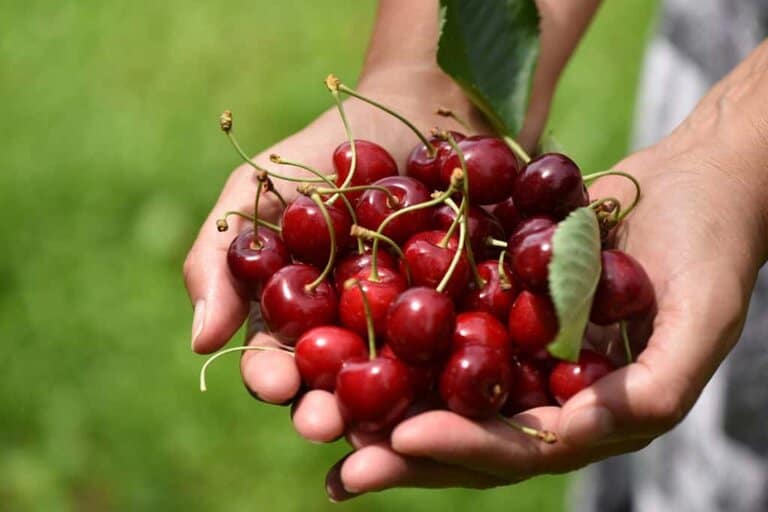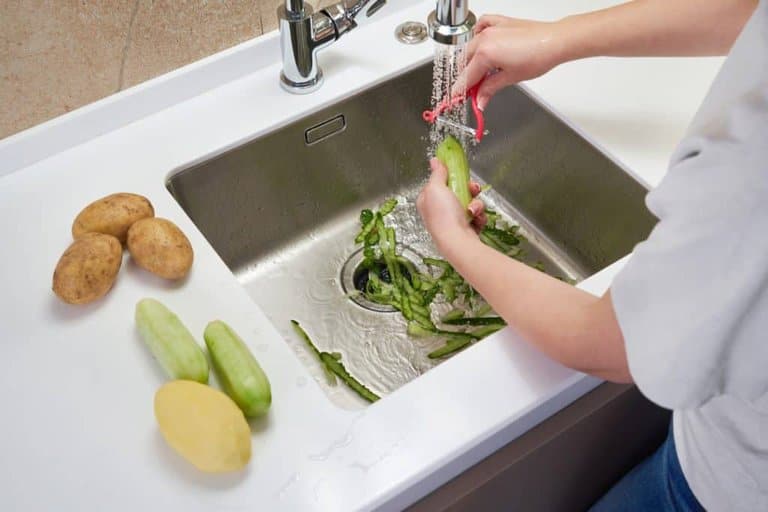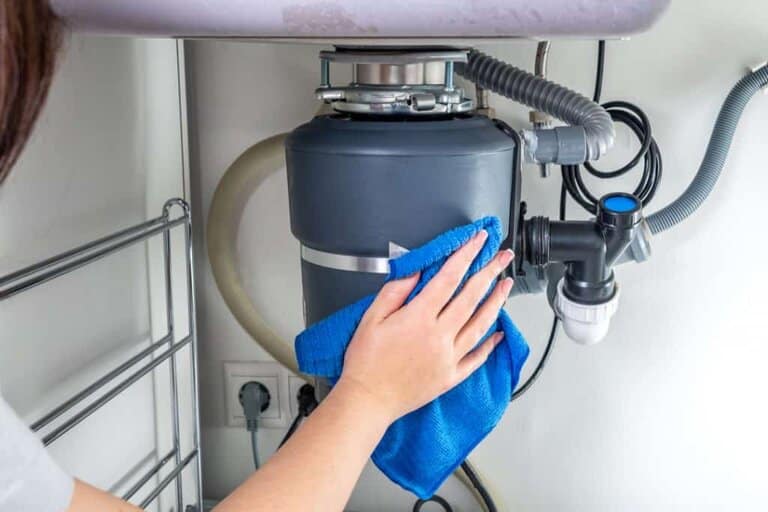Cherry pits should not be poured into the garbage disposal. They are way too hard to be broken down by the system. Waste like oil and grease, fibrous foods, coffee grounds, bones, and cherry pits may damage your garbage disposal.
How much have you spent on maintaining or replacing garbage disposals this year? I’m guessing a few hundred bucks. I have paid a small fortune to plumbers for different maintenance works on my garbage disposal system.
It turns out that the lack of information or misinformation is one of the main reasons why we run into issues with our garbage disposal, and I learned the hard way.
Obviously, one of the main causes of damaged garbage disposal is what we put in it. But it is often too easy to just throw anything in and act like there won’t be consequences.
Newsflash: There will. We dump a lot of wrong wastes in garbage disposals, but we’ll focus on why cherry pits are particularly a bad idea in this blog.

Why You Shouldn’t Put Cherry Pits Down Garbage Disposal
I can’t stress this enough, do not put cherry pits down your garbage disposal. The pits and seeds of the cherry are pretty hard, and this can be difficult for the disposal’s grind ring to break down.
The hard pits and seeds will bounce around until they blunt the grind ring. And when they become blunt, they can’t break down your usual waste, and you’ll have to make unplanned repairs.
How Do Garbage Disposals Work?
I believe a better understanding of how garbage disposals work will change our approach to pouring anything down the drain. Garbage disposals have a metal chamber with a circular plate with two rotating metal lugs.
These metal lugs grind food waste against a stationary grind ring. Some models even have multiple levels of grind rings. When food is poured down the drain and the disposal is turned on, the plate uses centrifugal force to spin the lugs against the rings.
This breaks down the food particles into tiny particles such that they can go through the tiny holes and down the sink drain.
Unlike what you might think, garbage disposals don’t have blades. This grind ring has holes, much like a grater, but it isn’t that sharp. Throwing in hard items will eventually damage the metal lugs and grind ring.
5 Other Wastes You Shouldn’t Throw into Garbage Disposals
Now that we know how garbage disposals do their magic, it would be easier to understand why the following items are not to be dumped down the sink.
Oil And Grease
When you are done deep frying bacon or turkey and are tempted to pour the grease down the drain, don’t do it. Oil damages your garbage disposal system in three folds. First, it covers the lugs and rings of your garbage disposal, making them slippery, dull, and ineffective.
It eventually hardens and combines with other waste matter like flour, soap scum, etc., to become pipe-blocking sludge that is notoriously hard to eliminate. This reaction will also produce a foul smell which makes staying in the kitchen unbearable.
Bones
The next time you finish making a meal out of roast turkey, or chicken, it is best to simply dispose of their bones in the trash bag. Garbage disposals are not designed for breaking rock-hard waste like bones. If the garbage disposal manages to break parts of the bone, the splinter could get stuck, clogging your pipes and damaging the system.
Coffee Grounds
Yes, coffee grounds made the list. As much as it saddens you to see this ‘harmless’ powder, they tend to stick to wet surfaces, which is bad news because your drain is almost always wet. This clog begins to build up with time until they form a sludgy blockage that may damage your waste disposal.
Fibrous foods
It is not advisable to dispose of fibrous foods in the garbage disposal: carrots, beets, potatoes, Brussel sprouts, string cheese, celery, etc. The high fiber content of these foods makes them hard to grind, gradually wearing out the system. If this persists long enough, it may cause an explosion, which means an entire garbage disposal replacement. It is much better to dispose of these foods in the trash can.

Non-Food Items
As harmless as it seems, your garbage disposal is not designed to handle non-food items. Whatever you need to dispose of can be done as far away from the kitchen as possible.
You should not dispose of paper, twist ties, aluminum, plastics, gravel, plant clippings, and other materials. If you have children, it is important to always check the garbage disposal before turning it on. They may not understand why cutlery, pencils, or dolls should not be flushed through the garbage disposal.
How To Clean A Garbage Disposal Unit

You may have heard cleaning advice that involves baking soda, lemon peels, ice, etc., but they are not as effective with garbage disposals.
They may give the system a fresh smell, but they do not deep clean hard-to-reach areas. The grime residue is located in the upper portion of the disposal chamber, which is best cleaned by hand.
- Turn off the garbage disposal.
- Using an old kitchen sponge, swab the areas systemically like the insides of a jar.
- Reach into the nook and cranny of the rubber gasket and continue this process with running warm water.
- Once this has been done satisfactorily, discard the sponge.
- Turn on the disposal and your faucet for a few minutes to allow it to rinse out.
FAQs About Putting Cherry Pits Into Garbage Disposal
How Do I Dispose Of Cherry Pits?
Cherry pits can be disposed of in the garbage can or bag. They can also be placed in a compost box to serve as fertilizers for the soil.
Is It Safe To Drop Ice Cubes Into Garbage Disposal?
It is not advisable. If you are dropping ice cubes into the garbage disposal to sharpen it, that simply doesn’t work. However, ice cubes can help knock stubborn food particles loose, reducing the build-up in the garbage disposal.